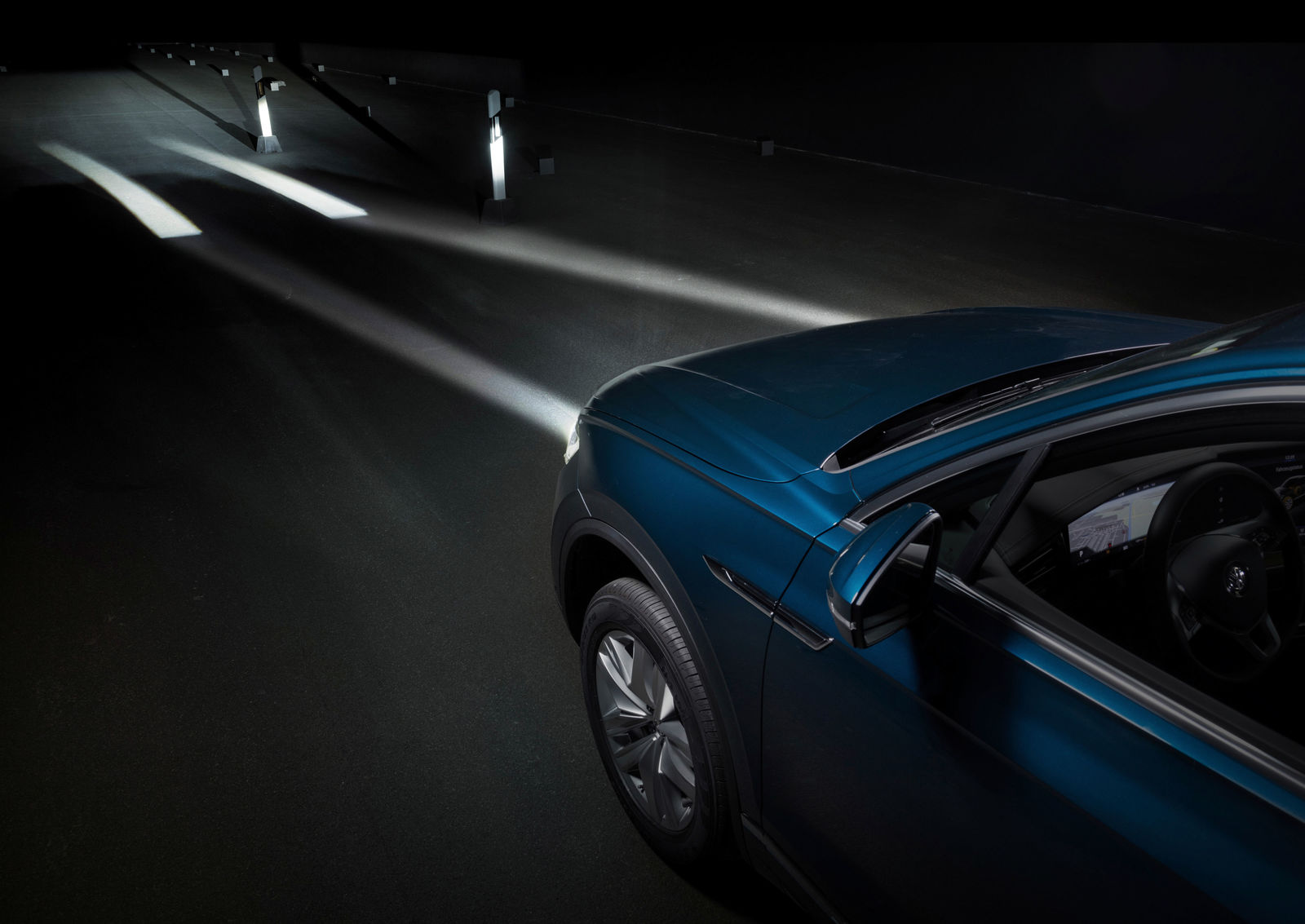HD-LCD headlight
Volkswagen uses newly developed HD-LCD headlights in a Touareg test vehicle. With their high-definition LCD, they enable a resolution of up to 30,000 pixels per headlight. In comparison, today's high-end headlights offer a resolution of around 80 pixels. With their much higher resolution, the HD-LCD headlights enable developers to implement and test highly complex lighting scenarios more precisely than ever before. The precise illumination of the road and the equally precise prevention of dazzling from oncoming traffic also minimises the shadow area in the light beam and thus maximises the illumination of the road. Again, this generates an increase in safety. The overriding aim is to use HD-LCD headlights to optimise classic functions and implement new ones. To experience this, of course, you need a test vehicle like the Touareg. Thanks to the HD-LCD headlights, the lighting engineers are free to choose what functions and light distributions are represented.
In addition, important new, light-based driver assist systems can be developed based on HD-LCD headlights. The latter use visual signs and function graphics that are projected onto the road via HD-LCD headlights. In this way, new assist systems such as the "Optical Lane Assist" can be realised. In this system, the headlights project lanes in front of the Touareg, giving the driver precise information about the width of the SUV (including trailer) and the distance to the road lane markings, for example at road works. The lanes also visually follow the radii of curves. Such useful lighting functions, bolstering safety, are being tested with the HD-LCD headlights. This also includes interactive functions for the assisted driving Volkswagen of tomorrow.
Developing functions before the hardware is available saves time
Volkswagen Research & Development is looking at the entire spectrum of HD headlight systems. Currently, the focus for the next generation of front lighting is on micro-pixel LED headlamps, which consume very little energy. The latter is of great importance particularly when headlights are used in electric vehicles, such as the future ID. models. At the same time, the HD-LCD headlights tested in the Touareg are providing Volkswagen engineers with an invaluable service. They make it possible to test useful lighting functions of tomorrow before the production-ready hardware is available. And this saves time, sometimes years. Saved development time that helps to make roads at night safer with innovative, intelligent light. Around 30 percent of all accidents involving personal injury occur at night, but the accident severity is about twice as high as during the day. Here, optimum illumination and intelligent light-based assist systems can provide an increase in safety.
In addition, purely interactive functions can be displayed – such as a welcome scenario that greets the driver as he approaches the Volkswagen. The light can also be personalised. So while one driver prefers a wide light beam, another may prefer a narrower, longer light beam. It is also conceivable that new lighting functions can be loaded to a vehicle via a type of app store.
How the HD-LCD headlights work
HD stands for High Definition as outlined. LCD – Liquid Crystal Display – is a technology more familiar from the entertainment sector. Here, several LEDs serve as light sources. Their light is split with a filter to make it usable for use with liquid crystals. This creates two paths of light, A and B. This provides the possibility of a defined polarisation, which is a prerequisite for LC displays. Both paths meet a display – the liquid crystal screen – which acts as a type of light filter. The polarisation can be used to decide for each of the 30,000 pixels whether its light should be passed through or not. This job is performed by a so-called analyser – another filter. By applying a voltage to the liquid crystal, the polarisation is changed from A to B – an on/off function. Depending on the polarisation, the light is either allowed through the pixel or blocked. This makes it possible to define which light (which pixel) falls on the road and which remains in the system. Intermediate levels are also possible, with which different shades of grey can be generated. And so it is possible to project graphic elements onto the street. However a disadvantage of the HD-LCD headlight is that the light components generated by the LEDs which do not fall on the road, remain unused as heat in the system. And that costs energy. This is why the efficiency of the HD-LCD headlight is limited at present.
